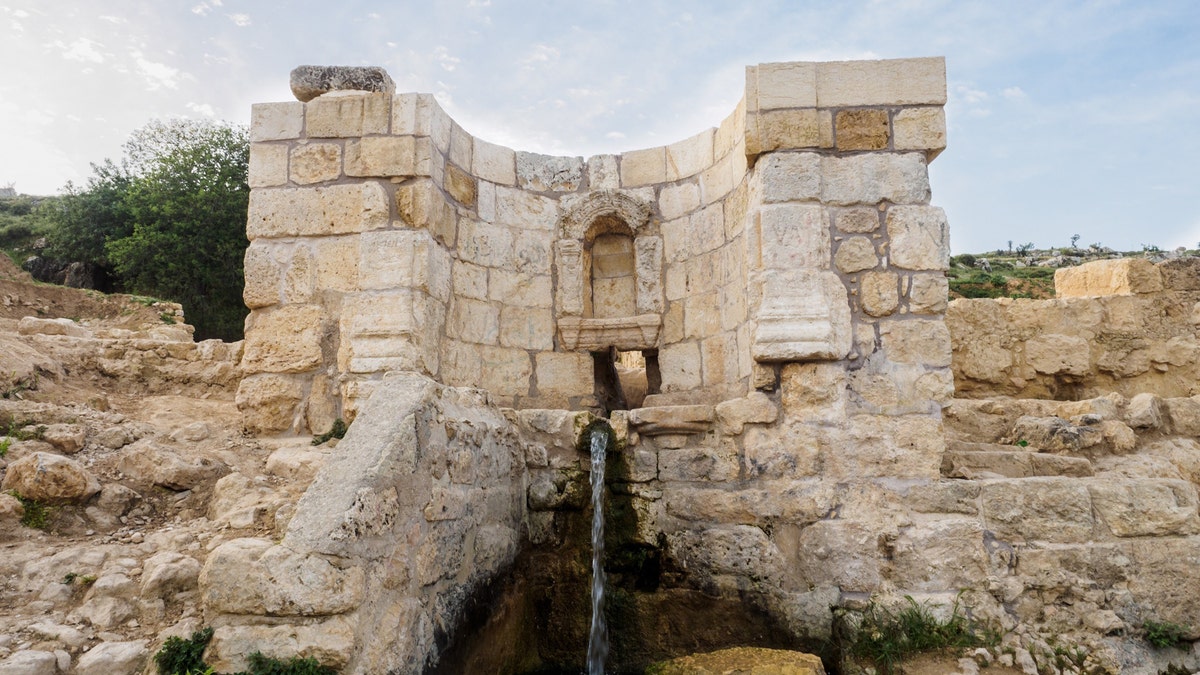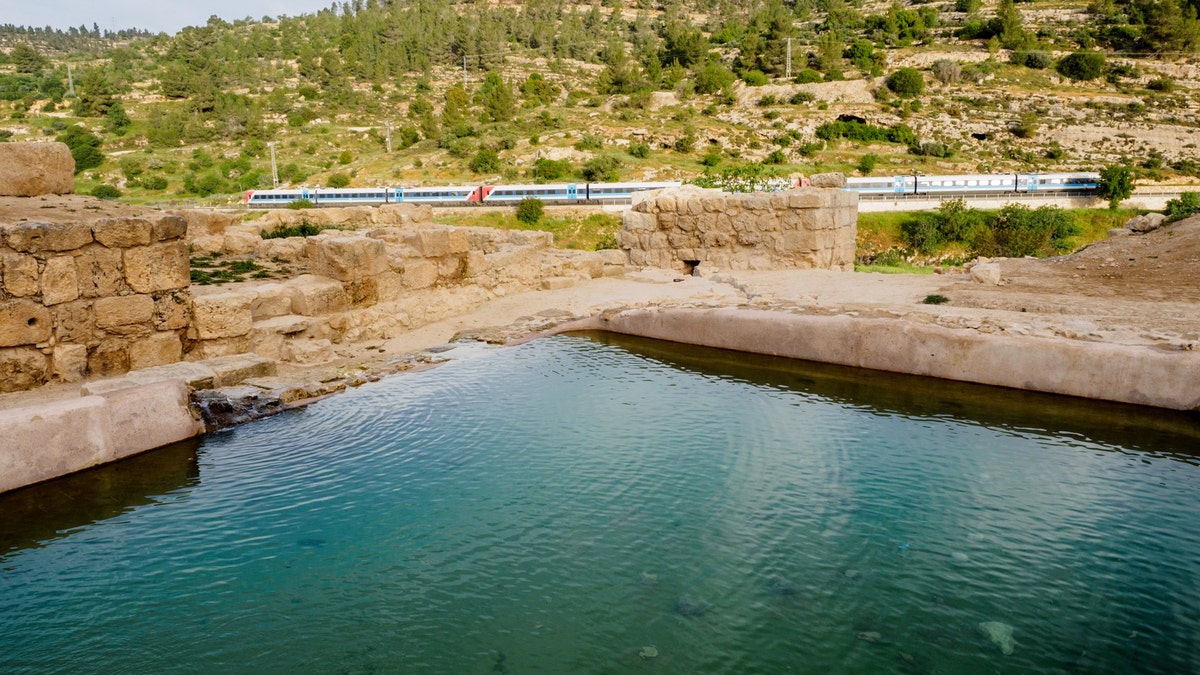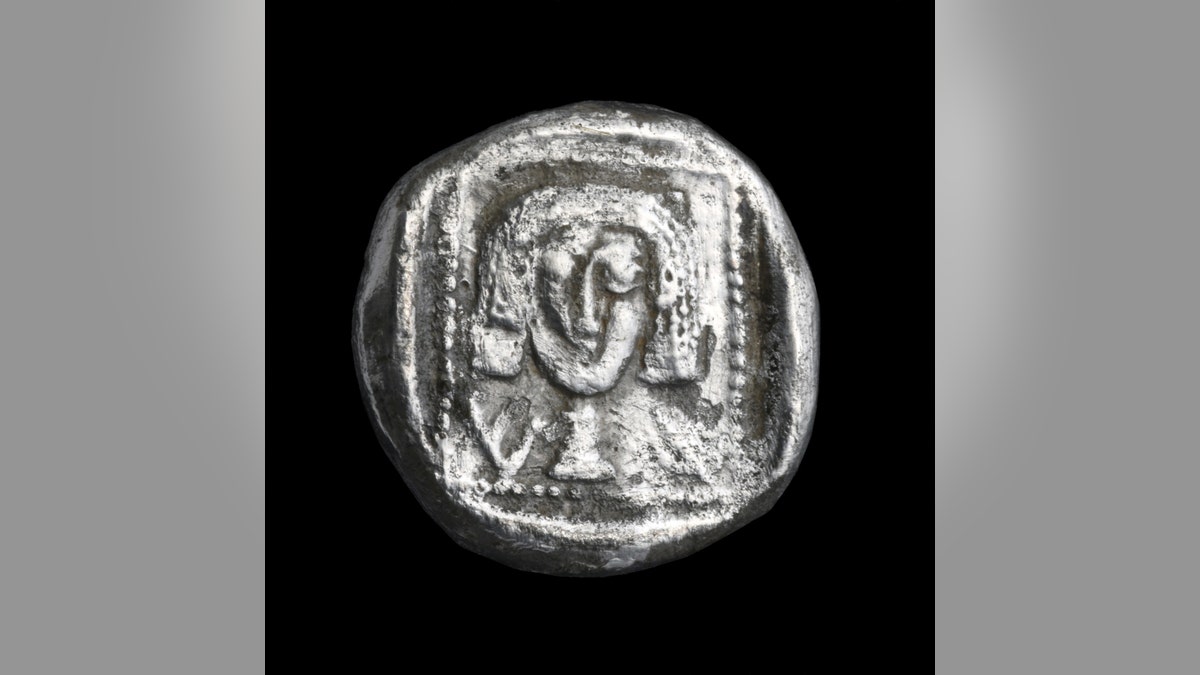New discovery: Ancient pools may have biblical ties
Archaeologists have unearthed a large 1,500-year-old pool and elaborate fountain at the site of an ancient church near Jerusalem.
Archaeologists in Israel have announced the discovery of a large 1,500-year-old pool and elaborate fountain at the site of an ancient church near Jerusalem.
The pool is part of a system of pools unearthed at Ein Hanniya Park between 2012 and 2016, officials said Wednesday. Built during the Byzantine era, the pools date back to between the 4th and 6th centuries A.D., according to the Israel Antiquities Authority. Other artifacts found at the site include a rare silver coin from the 4th century B.C. and an ancient capital, or part of a pillar. Experts say that the capital is typical of royal structures found the First Temple period between 960 B.C. and 586 B.C.
The site’s large pool, in particular, is generating plenty of buzz. “The most significant finding in the excavation is a large and impressive pool from the Byzantine period,” explained Irina Zilberbod, the excavation director for the Israel Antiquities Authority. “This pool was built in the center of a spacious complex at the foot of a church that once stood here. Roofed colonnades were built around the pool that gave access to residential wings.”
INCREDIBLE 1,500-YEAR-OLD CHRISTIAN MOSAIC UNCOVERED IN ISRAEL
There are still, however, plenty of unanswered questions about the mysterious pool. “It’s difficult to know what the pool was used for – whether for irrigation, washing, landscaping or perhaps as part of baptismal ceremonies at the site,” said Zilberbod. The pool’s water, she noted, drained through a network of channels to a fountain.

The fountain at the Ein Hanniya site (Photo: Assaf Peretz, Israel Antiquities Authority)
The fountain, a monument adorned with depictions of nymphs, is the first of its kind in Israel, according to archaeologists.
Experts worked to restore the ancient water systems, which are now functioning again.
LOST ROMAN CITY THAT WAS HOME TO JESUS' APOSTLES FOUND, SAY ARCHAEOLOGISTS
Coins, pottery and glass found at Ein Hanniya indicate that the location was a hive of activity between the 4th and 6th centuries B.C. The site has also been linked to the New Testament account of an Ethiopian Eunuch’s conversion to Christianity by St. Philip the Evangelist. “We believe that some early Christian commentators identified Ein Hanniya as the site where the Ethiopian eunuch was baptized, as described in Acts 8:26–40,” said Jerusalem District Archaeologist Dr. Yuval Baruch, in a statement. “The baptism of the eunuch by St. Philip was one of the key events in the spread of Christianity. Therefore, identifying the place where it occurred occupied scholars for many generations and became a common motif in Christian art.”

The site of Ein Hanniya after Israel Antiquities Authority Conservation Administration work. (Photo: Assaf Peretz, Israel Antiquities Authority)
Part of the site, Baruch, noted, is still owned by Christians and is a focus of religious ceremonies by the Armenian Church (which owns the site) and the Ethiopian Church.
Archaeologists also think that, prior to the Byzantine era, Ein Hanniya may have been a royal estate at the time of the First Temple, as evidenced by the capital discovery.
AMAZING WESTERN WALL DISCOVERY: NEW SECTION, ANCIENT THEATER, UNCOVERED IN JERUSALEM
The site is one of a number of amazing archaeological locations in Israel, many of which shed light on early Christianity. Last year, for example, archaeologists uncovered a stunning 1,500-year-old Christian mosaic that was once the floor of a church or monastery in the ancient coastal city of Ashdod-Yam.

Rare silver coin from the 4th century BCE, one of the most ancient ever discovered in the Jerusalem area. (Photo: Clara Amit, Israel Antiquities Authority) ( )
Also in 2017 an ancient Greek inscription was found on a 1,500-year-old mosaic floor near the Damascus Gate in the Old City of Jerusalem. The inscription mentions the Byzantine emperor Justinian, who ruled in the 6th century A.D., and commemorates the building’s founding by a priest called Constantine.
In 2015 a 1,500-year-old church was discovered at a Byzantine-era rest stop between Tel Aviv and Jerusalem. In 2014 the remains of another church from the same period were uncovered in southern Israel.
RARE FIND AT KING SOLOMON'S MINES: ANCIENT PREGNANT WOMAN'S REMAINS
Experts also believe they have found the lost Roman city of Julias, formerly the village of Bethsaida, which was the home of Jesus' apostles Peter, Andrew and Philip.
Follow James Rogers on Twitter @jamesjrogers
